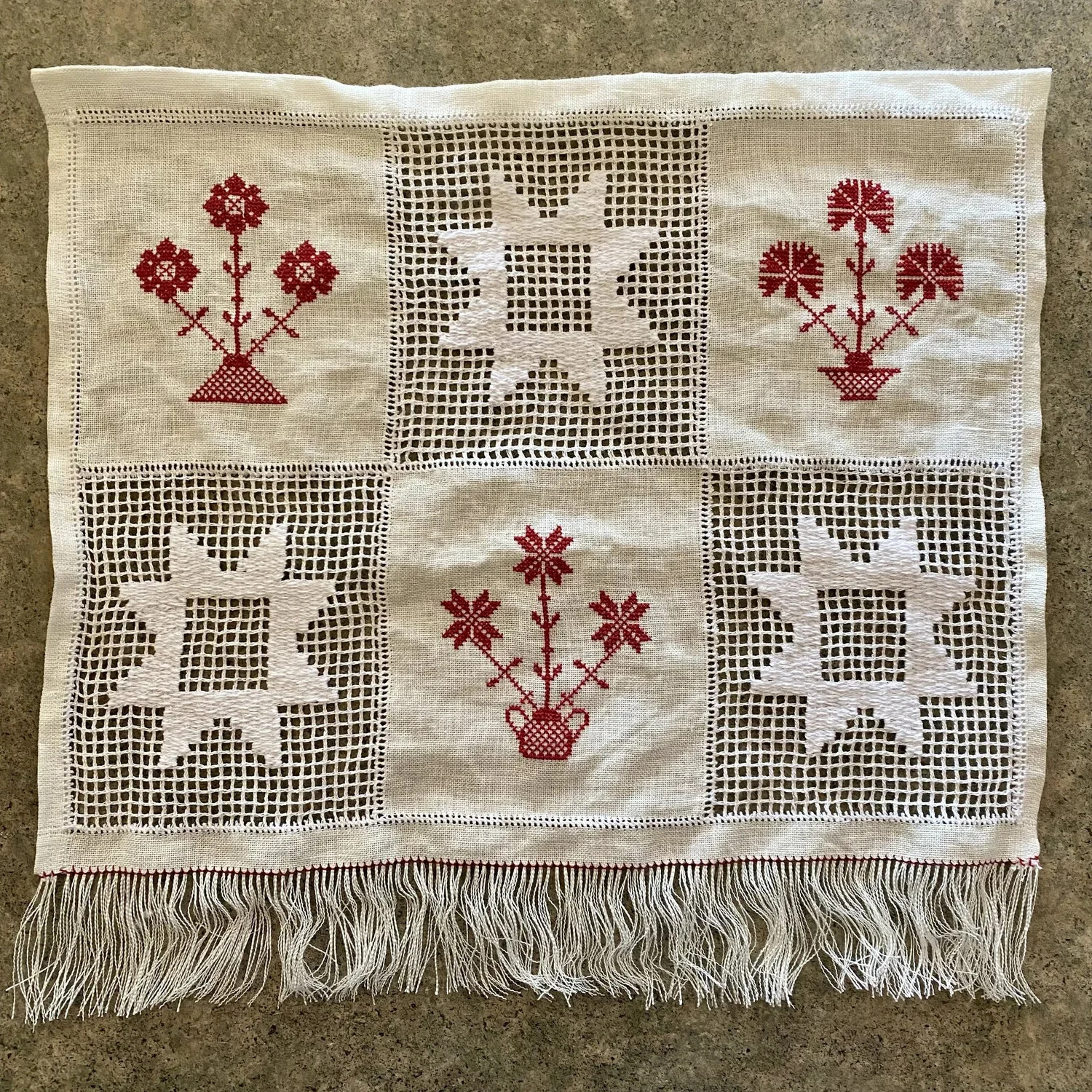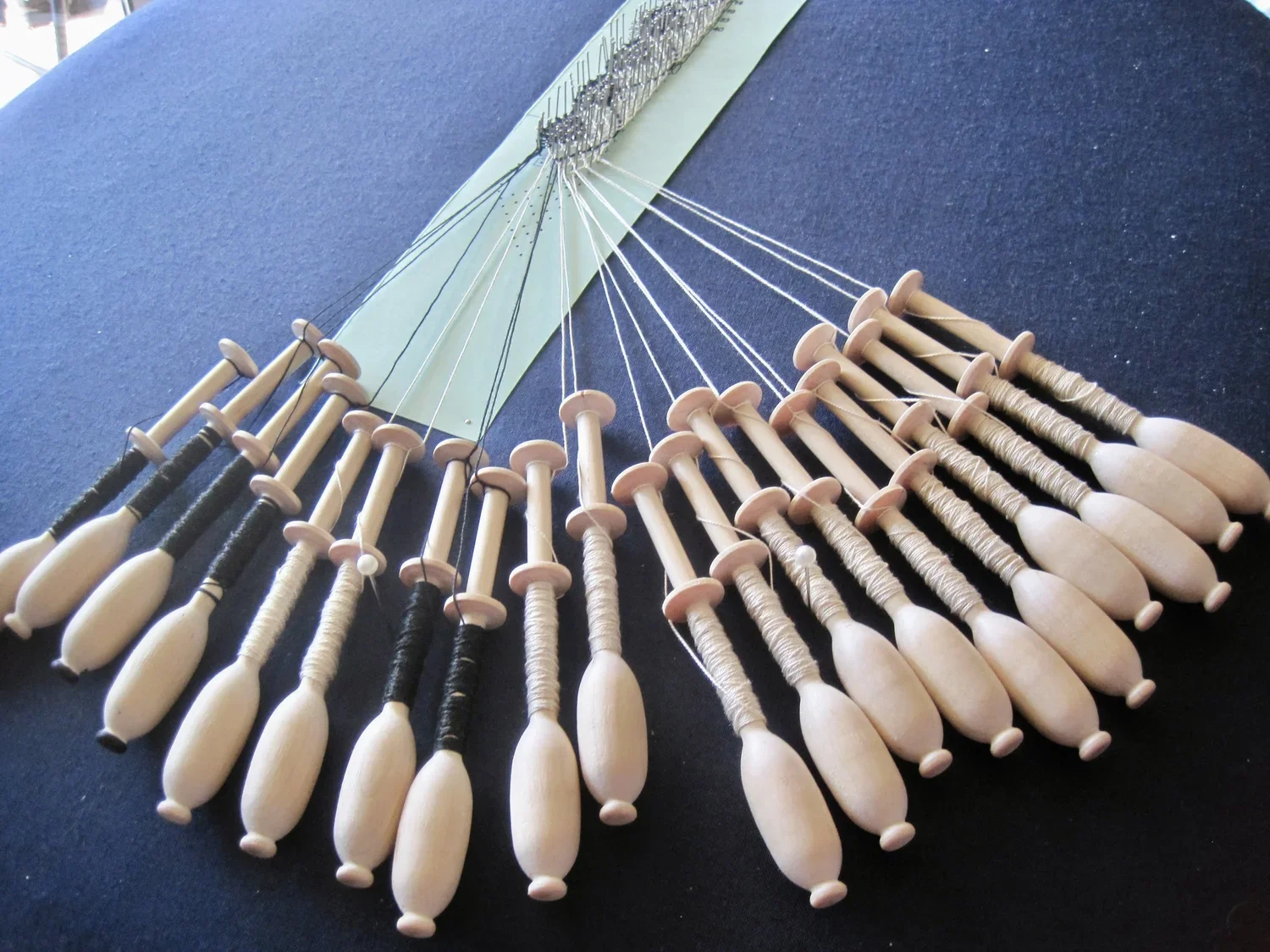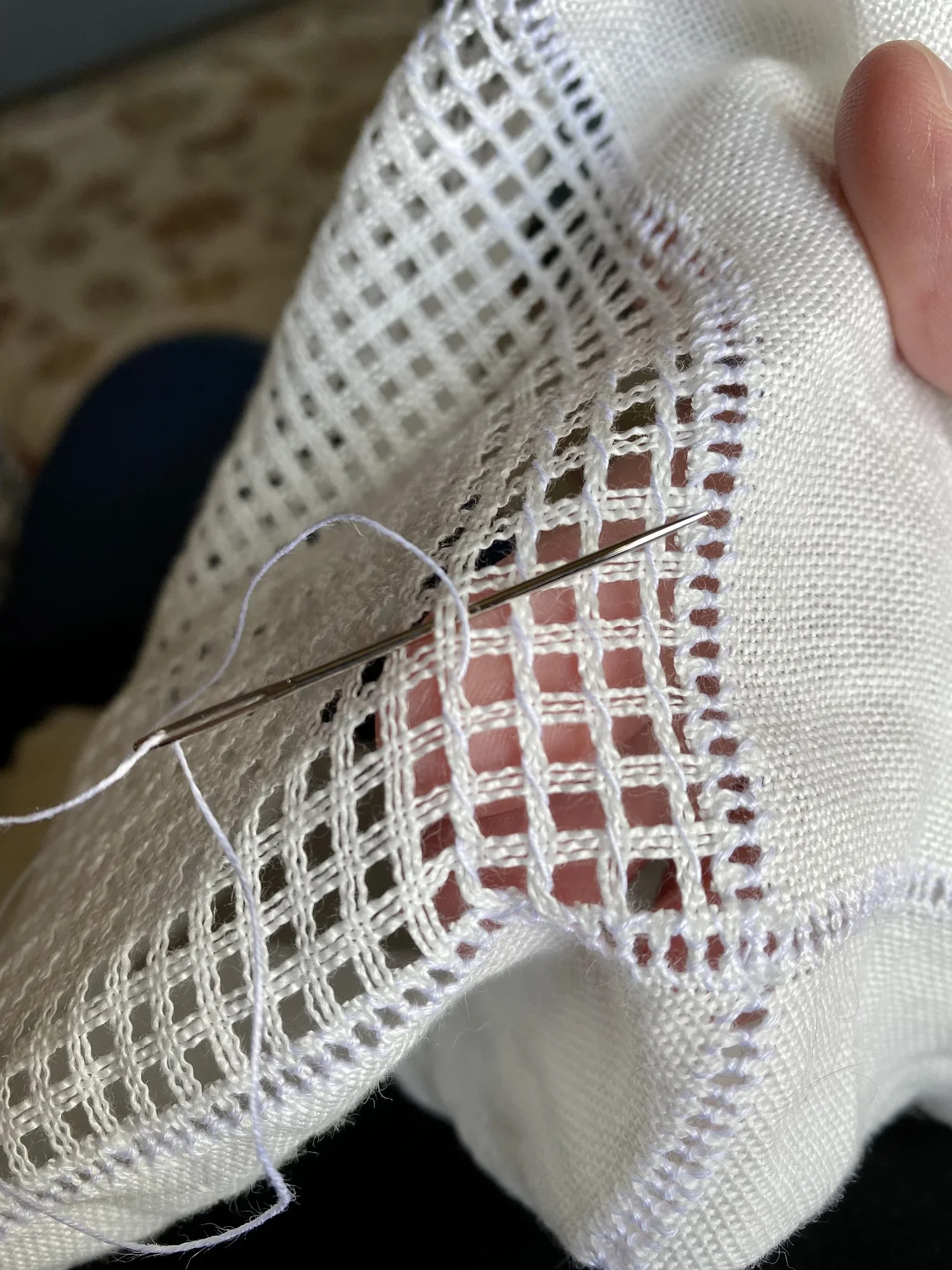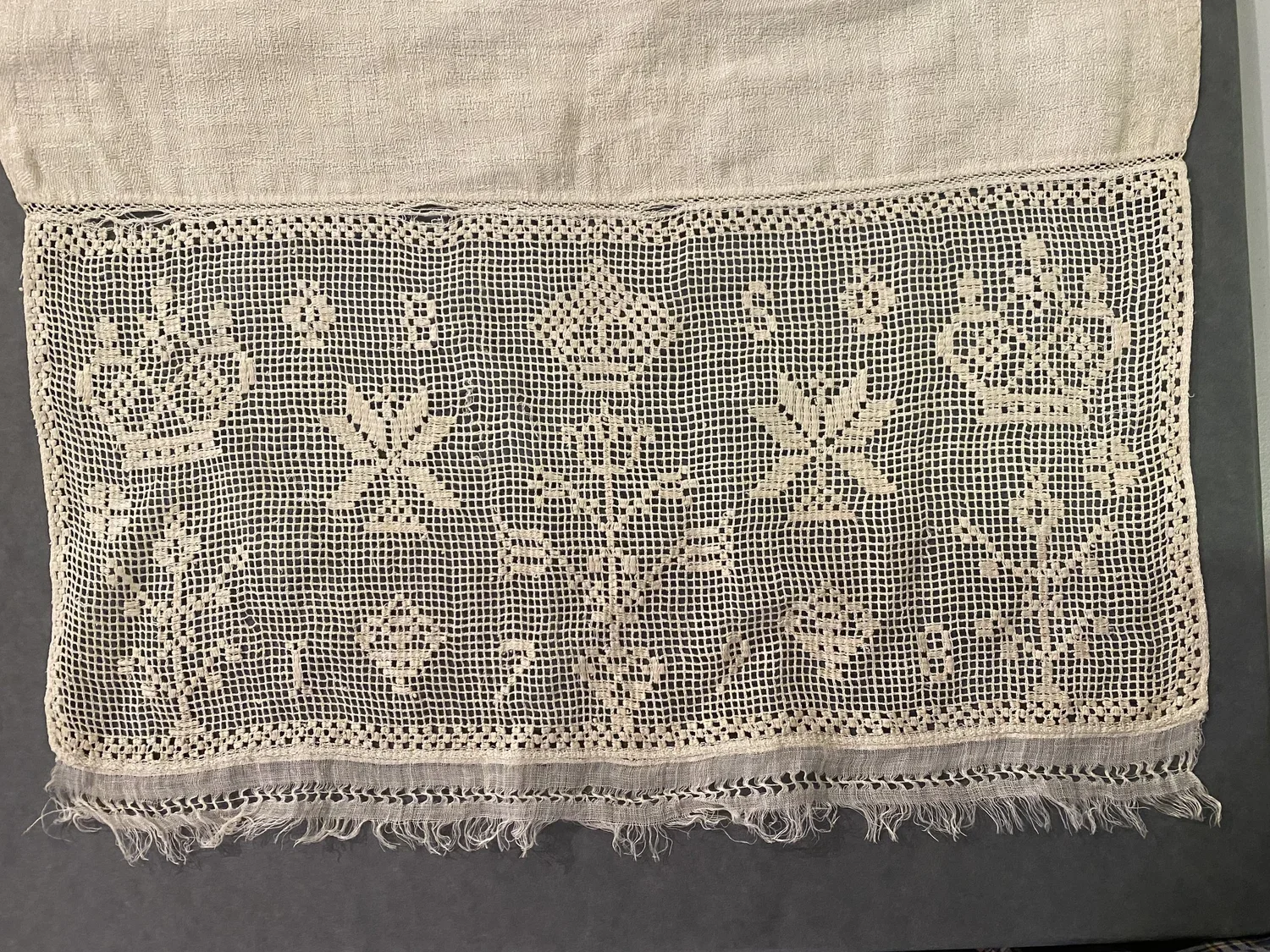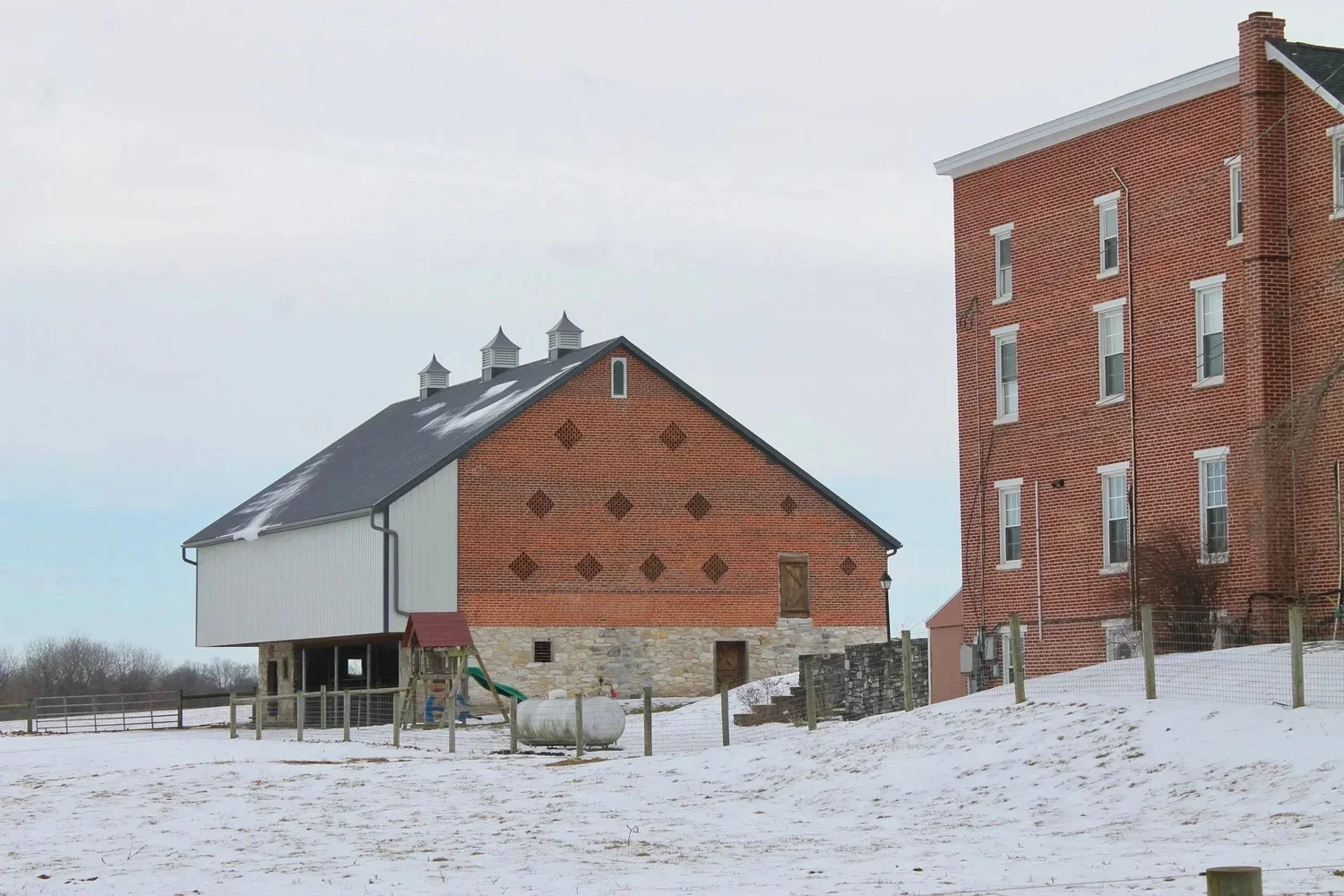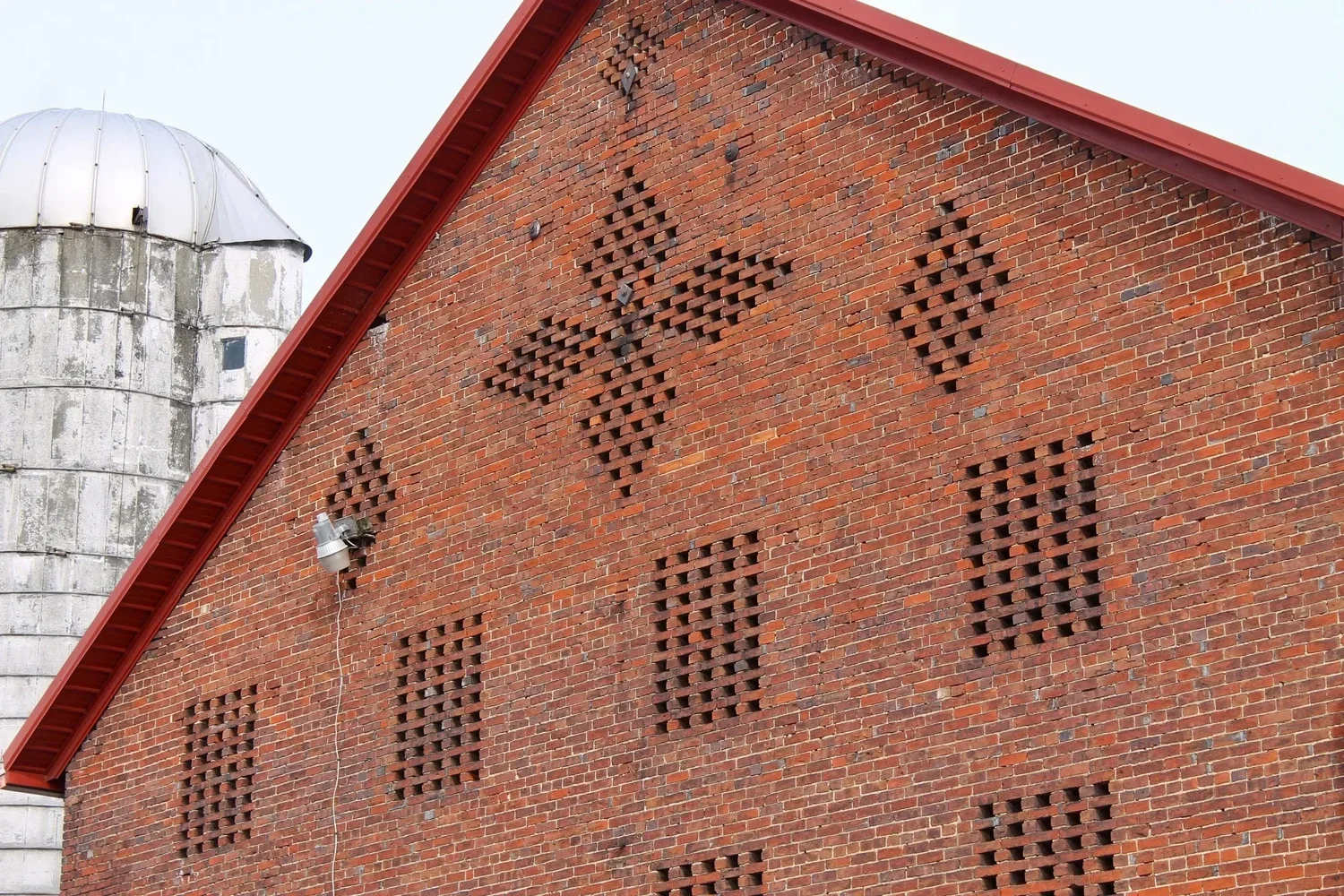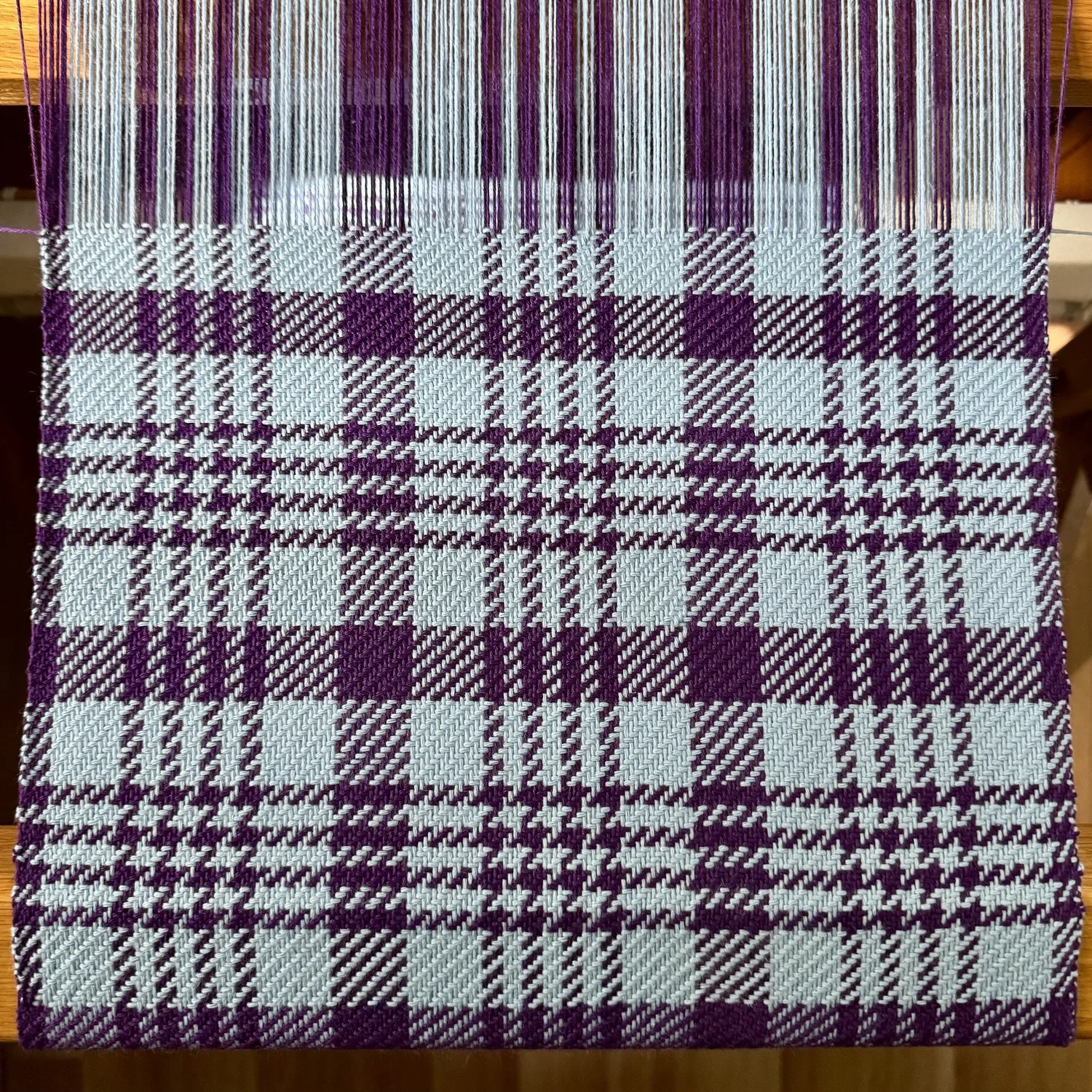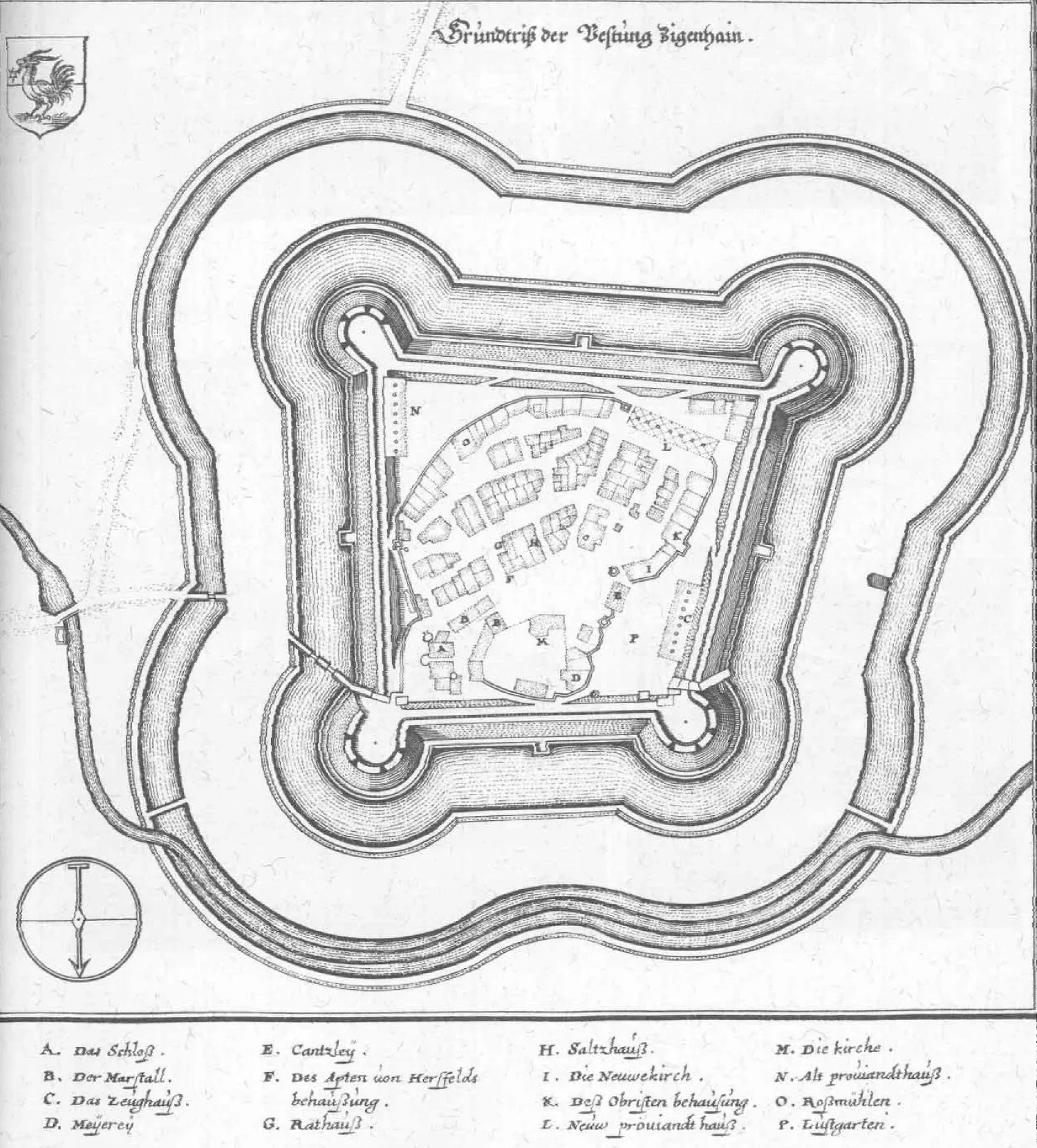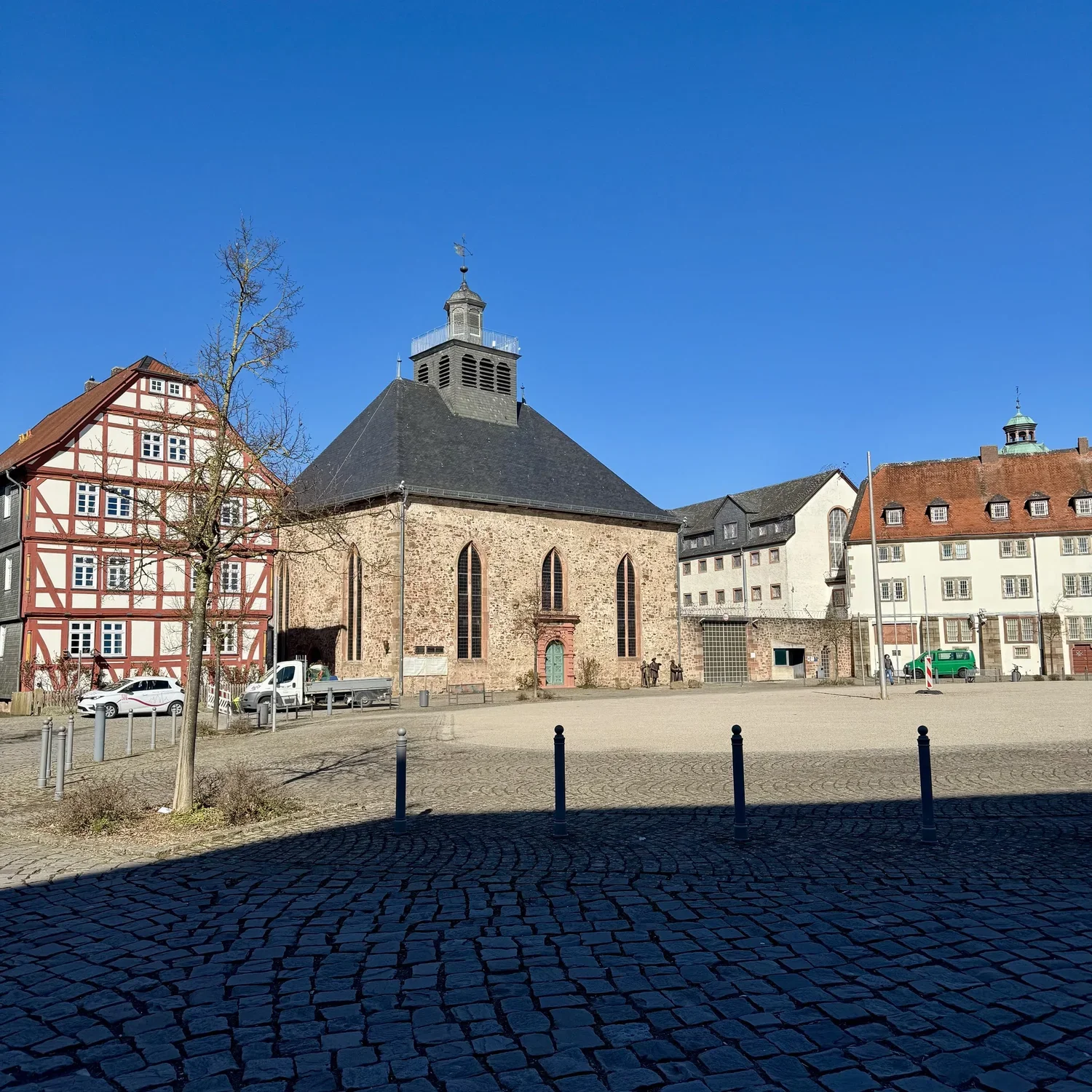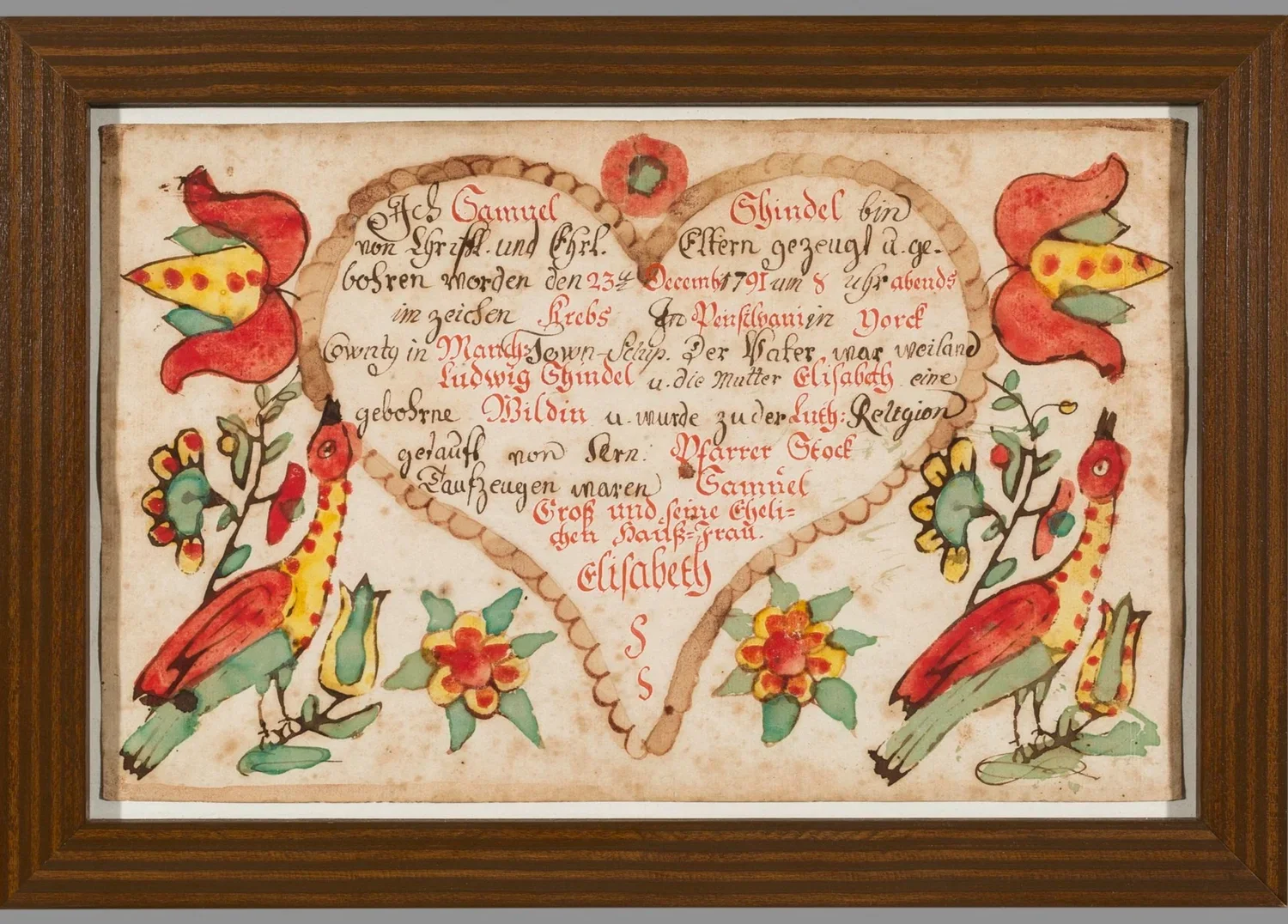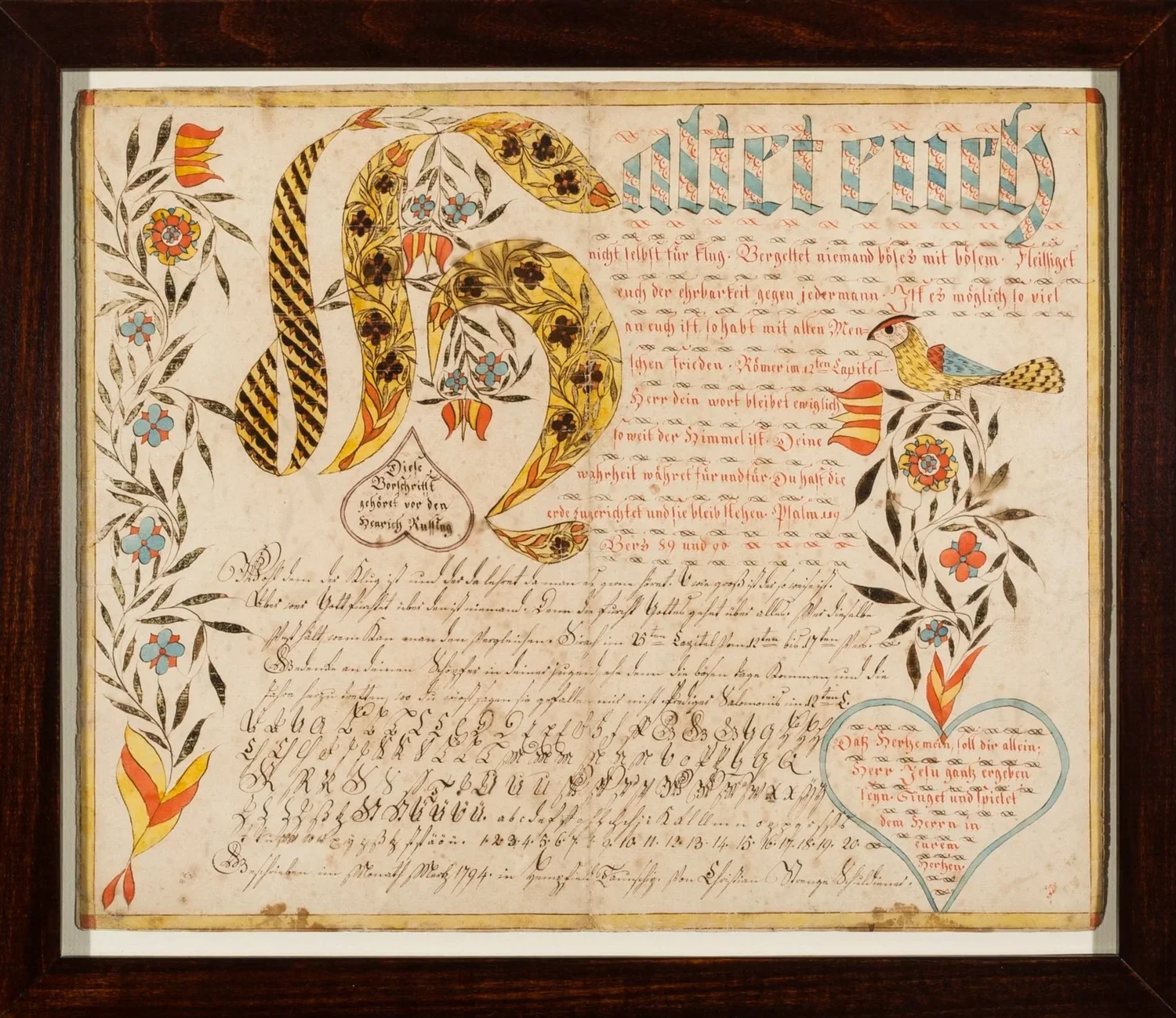Drawn thread work
Making lace can be extremely time-consuming.
Justina, 26 September 2025
Making lace can be extremely time-consuming. The most “sophisticated” way is through traditional needle lace. With a grounding thread, you create a design and then create a web of thread in the open spaces with a variety of decorative open stitches. Another way is through bobbin lace, where pairs of bobbins wound with thread are twisted and knotted in pattern to create lace. Both ways basically create open, lacey fabric just out of thread.
Lace making with bobbins
But you can create lace by simply making holes in already woven fabric. An early form of this so-called cutwork is reticella that was popular through the 17th century. Related to cutwork is drawn thread work where threads from either the warp (vertical threads) or weft (horizontal threads) of the fabric are drawn out to create holes, achieving a lace look.
The Pennsylvania Dutch enjoyed yards of handwoven linen in the homespun era and sometimes they used drawn thread to further decorate their embroidered items. Mostly commonly drawn thread was used in a panel of the ausgeneht handduch ‘decorated towel.’ These decorated towels used to hang on the parlor side of a door to the kitchen in older Pennsylvania Dutch homes. It is fairly time consuming and a bit nerve-wracking to cut away threads of fabric and remove them.
Removing threads and creating a fabric grid
Finally, thicker thread can be re-woven in to create designs.
Drawn thread panel on an ausgeneht handduch (1798), Schwenkfelder Library
A few years ago, I completed such a panel on a decorated towel for the Pennsylvania German Cultural Heritage Center in Kutztown.
Contemporary drawn thread panel on an ausgeneht handduch, PGCHC, Kutztown University
Brickend barn decorations
There have been far too many heated debates about the purpose of decoration among the Pennsylvania Dutch.
Gottlieb, 12 September 2025
There have been far too many heated debates about the purpose of decoration among the Pennsylvania Dutch. Some say it’s “just for nice,” others point to deeper meanings — even back to pagan symbolism. I think, sometimes, it’s both-and. Things need not be in such a this-or-that oppositional stance. We can see this clearly in the decorations on brick-end barns.
Brickend barn with diamond decoration
In the middle of the 19th century, brickend barns increased among the Pennsylvania Dutch, as opposed to the usual wooden ones. They were more costly but made use of the burgeoning brick production of the 19th century.
Brickend barn with diamond/star and rectangle decorations
Barns need ventilation, but rather than just put in random holes between the bricks, some devised decorations that ranged from sheaves of wheat to humans. These new brickends presented a canvas for decoration and the Pennsylvania Dutch builders let loose their skills. I still have to make plans to see the famous man-riding-on-the-mule barn near Greencastle, Franklin County.
West of the cloister
This week on my loom are some placemats in a pattern that I’ve called “Meadow Valley.”
Philibert, 22 August 2025
This week on my loom are some placemats in a pattern that I’ve called “Meadow Valley.” Meadow Valley is located just west of Ephrata (Lancaster County) in an idyllic setting around the tiny Meadow Run.
“Meadow Valley” is a traditional Pennsylvania Dutch dobbelstein — our word for any kind of a plaid pattern. In the homespun era, the Pennsylvania Dutch grew flax, harvested it, prepared it, and spun it into yarn. It was then taken to a local weaver who used the yarn to produce yards of linen for home use. These dobbelstein linens were used for all sorts of household items from clothing to bed linens.
“Meadow Valley” being woven on the loom
I’ve called this pattern “Meadow Valley,” because a young Louisa Pleam used to head there with her aunt in the 1860s, loaded down with their homespun yarn. Louisa’s Aunt Betsy and Uncle Levi Bingaman were householders at the Ephrata Cloister. The cloister was a semi-monastic religious community founded in 1732 by Johann Conrad Beissel on the banks of the Cocalico Creek in Lancaster County. Louisa learned how to spin flax into yarn from her aunt and the sisters at the Ephrata Cloister, and, according to her 1936 obituary, Louisa Pleam Spangler was one of the best demonstrators of hand spinning in Lancaster County.
Meadow Valley, where Betsy and Louisa took their handspun yarn, was home to a weaver with the last name Kiddinger. Weaver Kiddinger charged Betsy and Louisa 14 cents per yard for plainer, simpler weaving and 50 cents per yard for more time-consuming weaves.
This is one of his patterns that he wove for Betsy and Louisa in the 19th century. I decided to change up a rather plain plaid into something with a bit more interest by adding a twill structure to it. I’m enjoying the rhythmic large blocks interrupted by smaller alternating lines. I’m guessing Weaver Kiddinger would’ve charged 25 cent per yard for a dobbelstein zwillich ‘plaid twill.’
On the parade ground with fraktur artists
This past March, I returned to Marburg, Germany where I did most of my undergraduate college studies.
Maria Himmelfahrt, 15 August 2025
This past March, I returned to Marburg, Germany where I did most of my undergraduate college studies. While there, I wanted to head north a bit in the state of Hesse to learn more about the whitework embroidery practiced in the Schwalm. So, I visited the Museum of the Schwalm, located in the middle of the moated fortress at Ziegenhain that was built in the 16th century.
Moated fortress Ziegenhain, Topographia Hassiae (1655)
Right in front of the museum is a military parade ground that was built in 1769.
Paradeplatz (parade ground), Ziegenhain, Hesse
When Frederick II the landgrave of Hesse-Kassel made a deal with the British to supply them with soldiers, he gathered the recruits on this parade ground in Ziegenhain. Those Hessian soldiers sent to America by the British were actually the cause of one of the grievances against the crown written in the Declaration of Independence:
[George III] is at this time transporting large Armies of foreign Mercenaries to complete the works of death, desolation, and tyranny…
As I stood there, I reflected on two of our most well-known Pennsylvania Dutch fraktur artists. Friedrich Krebs (c. 1749–1815) was the most prolific fraktur artist. He likely lived in Zierenberg, about 40 miles north of Ziegenhain. Krebs came to America as one of these Hessian soldiers, but stayed and taught in Swatara Township and lived near Hummelstown in Dauphin County.
Geburts- und Taufschein by Friedrich Krebs, 1957.1212A, Winterthur Museum
My thoughts then turned to another well-known fraktur artist Christian Strenge (1757–1825). Strenge was born in Altenhasungen, about 60 miles north of Ziegenhain. He also came to America as a Hessian soldier, stayed in America, and lived in both Hempfield and East Petersburg in Lancaster County.
Vorschrift by Christian Strenge, 1981.0002, Winterthur Museum
Standing there on the former parade grounds, I wondered if Friedrich and Christian were at the same spot years ago being recruited before heading to America. They arrived to fight Americans, but stayed to make these beautiful works on paper and to teach our ancestors. Indeed, they became “one of us” Pennsylvania Dutch.

